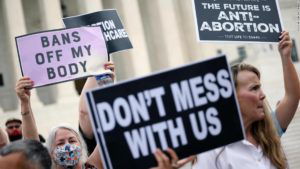
N.Y.-Bound Amtrak Train Derails in Philadelphia, Killing 8 and Injuring More Than 200 Says Petrillo & Goldberg
Jun 18, 2015
Pennsauken, NJ (Law Firm Newswire) June 18, 2015 – Feds say train was traveling at more than twice the speed limit on sharp curve of tracks.
In one of the worst accidents in Amtrak’s history, the carrier’s Northeast Regional Train No. 188, traveling from Washington to New York City, derailed in Philadelphia on May 12. The seven-car train, which jumped the tracks at approximately 9:30 p.m., ended up in a mangled mess and left eight passengers dead and at least another 200 injured among the 243 people, including five crew members, who were onboard the train.
Many survivors, dazed and bloodied, spilled outward as best they could in the darkness from the twisted train wreck — some had to disembark from overturned cars through impromptu exits such as windows that were pointed skyward — onto the surrounding railway. Many who could walk attempted to make their way toward help in the immediate vicinity, the Port Richmond area of Philadelphia. First responders transported most of the victims to area hospitals.
Investigators from the National Transportation Safety Board (NTSB) soon arrived at the scene of the derailment. And at a post-crash press conference, lead NTSB investigator Robert Sumwalt said that the train was traveling at a speed of up to 106 mph when it entered the Frankford Junction curve — one of the sharpest in the Northeast Corridor — where the speed limit is 50 mph. Information collected from the train’s data recorder confirmed Sumwalt’s contention that the train was traveling too fast over the section of track where it derailed.
“The fact that the train was moving at more than twice the speed limit for the curve in the tracks where it derailed creates a clear causal connection to the accident,” said Steven Petrillo, a prominent personal injury attorney in Philadelphia. “Amtrak had a duty of care toward its passengers, and it is not hard to conclude that the carrier acted negligently when its train attempted to pass through that curve at an excessive speed and will likely be held liable for damages.”
Sumwalt pointed out that technology known as positive train control — which automatically slows down or stops trains going too fast or halts them before an impending collision with another train — could have prevented the crash had it been in place where the train left the tracks. While positive train control has been added to some stretches of the heavily traversed Northeast Corridor, the system is largely absent from the Philadelphia area.
Congress mandated that all of the nation’s railroad system have positive train control by the end of 2015 in the wake of a deadly head-on collision in September 2008 between a Metrolink train and a freight train in Chatsworth, Calif., that resulted in 25 deaths and more than 100 injuries.
The Amtrak train derailed on a portion of the Frankford Junction curve that is almost exactly the same location of an even deadlier derailment. On September 6, 1943, a Congressional Limited with 541 passengers jumped the tracks, a crash that killed 79 passengers and injured another 117.
“It will be interesting to see if the installation of positive train control is accelerated throughout the U.S. rail system in the wake of the recent Amtrak derailment, especially in notoriously tricky stretches such as the Frankford Junction,” Petrillo said. “Improvements to the nation’s aging railway infrastructure should already be a top priority, and it should not take numerous train wrecks to compel lawmakers to act.”
Learn more at http://www.petrilloandgoldberg.com/
Petrillo & Goldberg Law
6951 North Park Drive
Pennsauken, NJ 08109
19 South 21st Street
Philadelphia, PA 19103
70 South Broad Street
Woodbury, NJ 08096
Phone: 856-486-4343
Fax: 856:486-7979
- During the pretrial period of discovery each side must share information with the other
Whenever an individual files a personal injury lawsuit against another person or entity, the defendant is entitled to access to the plaintiff’s medical records through a process known as discovery. Conversely, the plaintiff is also entitled to pertinent information such as the defendant’s insurance policy. Indeed, many of the key pieces of information that each […] - Rollover crash victims may be entitled to file a personal injury lawsuit against the driver
The vast majority of motor vehicle accidents in the United States involve two or more vehicles. Accidents can bring injury or death to one or more of the parties, who may very well have grounds for filing a personal injury lawsuit afterward. Single-vehicle crashes, particularly rollovers, are not anywhere near as common as multi-vehicle crashes. […] - Lawsuits against government entities may face unique limitations
When a plaintiff files a personal injury lawsuit, the plaintiff’s attorney will usually seek compensation for all possible damages against the defendant. But when the defendant is a government entity, different laws may apply – and they can limit recoverable damages. A prime example came to light on March 12, when a three-judge panel of […] - Workers’ compensation system complexity highlighted in Pennsylvania check-cashing case
The workers’ compensation legal systems in most states, including New Jersey and Pennsylvania, are complex. And a high-profile example of why workers’ compensation is so complex was revisited on February 20, when a seven-judge panel of the Commonwealth Court of Pennsylvania ordered the state Appeal Board to reconsider the twice-denied claim of a woman who […] - Damaged vehicles with doctored titles pose highway danger, especially in New Jersey
Traffic safety includes many factors, not least of which is proper motor vehicle maintenance. Critical items like brakes, tires and air bags can save lives in a potential highway collision. It is particularly important that motor vehicles meet safety standards in the densely populated state of New Jersey. As such, it is unsettling that Garden […]




